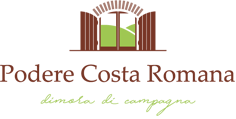Ring race from April 24th to May 12th 2019
No feast at Narni exceeded for pomp and duration that which took place in honor of the Holy Juvenile, First Bishop of the city. In local worship, the festival traditionally takes place on 3 May.
The city statutes renewed in 1371, codified those that were the ancient rites and the ludi that were held in Narni in honor of Juvenal defensor civitatis.
Since May 1, the Auctioneer made public the festive event. On the evening of the 2nd, after complete, an imposing procession took place: the illumination went under the inflection of the gonfalons, accompanied by religious choirs and the sound of musical instruments, in the Cathedral where castles and guilds were given to make their own offer of wax .
On 3 May, the day dedicated to the Holy Youth, after a solemn religious ceremony in the Cathedral, the party assumed its own playful character, leaving space for traditional equestrian games; the race of the Palio and the race to the Ring.
The first was a competition of pure speed that took place along the path that from S. Andrea in Lagia reached the petronum in the Piazza dei Priori to which the milites and the equites, could enroll a horse led by a young rider. The prize was a silk Palio, about six meters long, worth three pounds of gold.
The Race to the Ring was instead reserved for the Narnese knights. The Dominus Vicarius invited those who intended to run the ring to line up at the corner of the church of S. Saved in the Piazza dei Priori and then fling with its own rod to put the target of the value of 100 money Cortonesi. The order of departure was established according to membership of the Terzieri’s military brigades: Mezule, Fraporta, Santa Maria.
The purchase of the Palio and the Ring was made with the payment of 4 gold Florins due to the Jewish community.
During the sixteenth century, they joined the traditional games, the fight between the buffalo and the bull, the fight, the quintana, the comedies set up by young Narnese, the breakfast offered to women.
Successfully recreated in 1969, the Corsa all’Anello distinguishes itself in the panorama of the National and European Historical Feasts as one of the events that more than others has sought links with its historical tradition, activating the volunteer forces for tourism and cultural development of the city.

